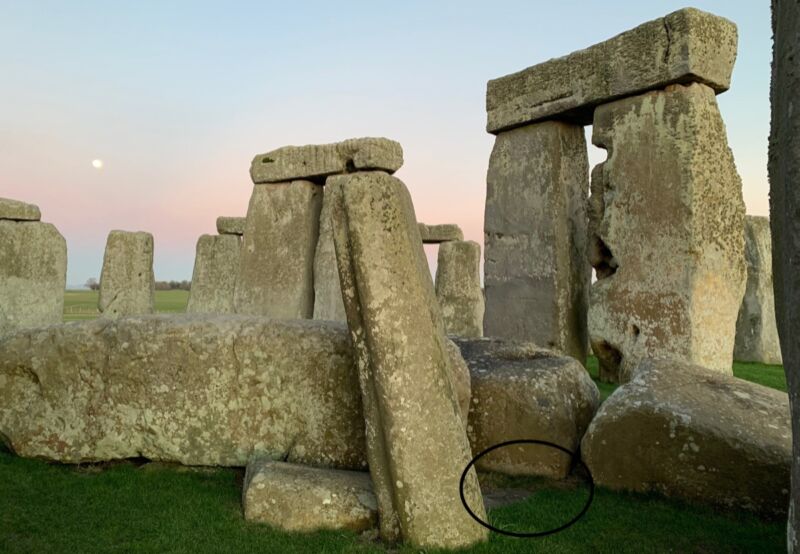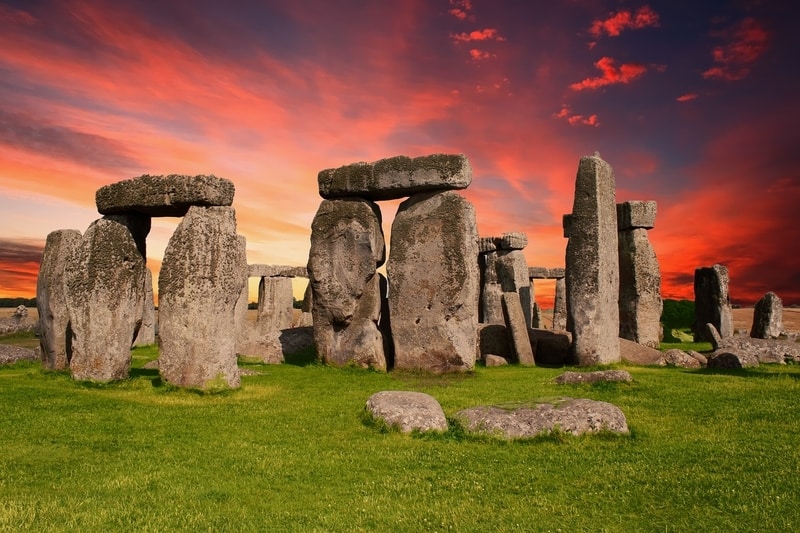Anthropology
Related: About this forumScientists solved mysterious origin of Stonehenge's Altar Stone: Scotland
The stone's chemical fingerprint closely matches old red sandstone from Orkney region.
JENNIFER OUELLETTE - 8/14/2024, 2:45 PM

The Altar Stone at Stonehenge weighs roughly 6 tons and was probably transported by land—or possibly by sea.
English Heritage
The largest of the "bluestones" that comprise the inner circle at Stonehenge is known as the Altar Stone. Like its neighbors, scientists previously thought the stone had originated in western Wales and been transported some 125 miles to the famous monument that still stands on the Salisbury Plain in Wiltshire, England. But a new paper published in the journal Nature came to a different conclusion based on fresh analysis of its chemical composition: The Altar Stone actually hails from the very northeast corner of Scotland.
“Our analysis found specific mineral grains in the Altar Stone are mostly between 1,000 to 2,000 million years old, while other minerals are around 450 million years old,” said co-author Anthony Clarke, a graduate student at Curtin University in Australia, who grew up in Mynydd Preseli in Wales—origin of most of the bluestones—and first visited the monument when he was just a year old. “This provides a distinct chemical fingerprint suggesting the stone came from rocks in the Orcadian Basin, Scotland, at least 750 kilometers [450 miles] away from Stonehenge."
As previously reported, Stonehenge consists of an outer circle of vertical sandstone slabs (sarsen stones), connected on top by horizontal lintel stones. There is also an inner ring of smaller bluestones and, within that ring, several free-standing trilithons (larger sarsens joined by one lintel). Radiocarbon dating indicates that the inner ring of bluestones was set in place between 2400 and 2200 BCE. But the standing arrangement of sarsen stones wasn't erected until around 500 years after the bluestones.
No contemporary written records exist concerning the monument's construction, and scholars have pondered its likely use and cultural significance for centuries. Stonehenge's form (and maybe its purpose) changed several times over the centuries, and archaeologists are still trying to piece together the details of its story and the stories of the people who built it and gathered in its circles.
More:
https://arstechnica.com/science/2024/08/study-stonehenges-central-altar-stone-actually-hails-from-scotland
Judi Lynn
(164,049 posts)
CHRISTOPHER PLAIN·AUGUST 14, 2024
Researchers from Curtin University in Australia say a new analysis of the six-ton Altar Stone at the center of Britain’s Stonehenge monument was likely transported at least 750 kilometers from a quarry in Scotland.
The discovery seems to “point to the existence of unexpectedly advanced transport methods and societal organization at the time of the stone’s arrival” in England nearly 5,000 years ago.
“Transporting such massive cargo overland from Scotland to southern England would have been extremely challenging, indicating a likely marine shipping route along the coast of Britain,” explained Professor Chris Kirkland from the Timescales of Mineral Systems Group at Curtin and the co-author on the recently published study outlining the team’s research.
“This implies long-distance trade networks and a higher level of societal organisation than is widely understood to have existed during the Neolithic period in Britain.”
More:
https://thedebrief.org/5000-years-ago-advanced-transport-methods-were-used-to-move-massive-altar-stone-at-the-center-of-stonehenge/
oasis
(53,352 posts)Permanut
(7,987 posts)speak easy
(12,595 posts)Marcuse
(8,793 posts)
sl8
(16,992 posts)Thanks, Judi.
More here:
https://www.nature.com/articles/s41586-024-07652-1
(pdf, fulltext, more, at link)
Open access
Published: 14 August 2024
A Scottish provenance for the Altar Stone of Stonehenge
Anthony J. I. Clarke, Christopher L. Kirkland, Richard E. Bevins, Nick J. G. Pearce, Stijn Glorie & Rob A. Ixer
Nature volume 632, pages 570–575 (2024)
Abstract
Understanding the provenance of megaliths used in the Neolithic stone circle at Stonehenge, southern England, gives insight into the culture and connectivity of prehistoric Britain. The source of the Altar Stone, the central recumbent sandstone megalith, has remained unknown, with recent work discounting an Anglo-Welsh Basin origin1,2. Here we present the age and chemistry of detrital zircon, apatite and rutile grains from within fragments of the Altar Stone. The detrital zircon load largely comprises Mesoproterozoic and Archaean sources, whereas rutile and apatite are dominated by a mid-Ordovician source. The ages of these grains indicate derivation from an ultimate Laurentian crystalline source region that was overprinted by Grampian (around 460 million years ago) magmatism. Detrital age comparisons to sedimentary packages throughout Britain and Ireland reveal a remarkable similarity to the Old Red Sandstone of the Orcadian Basin in northeast Scotland. Such a provenance implies that the Altar Stone, a 6 tonne shaped block, was sourced at least 750 km from its current location. The difficulty of long-distance overland transport of such massive cargo from Scotland, navigating topographic barriers, suggests that it was transported by sea. Such routing demonstrates a high level of societal organization with intra-Britain transport during the Neolithic period.
[...]
muriel_volestrangler
(105,558 posts)But a separate academic study has now found that Orkney is not, in fact, the source of the altar stone, meaning the tantalising hunt for its place of origin goes on.
The new study, which was conducted separately from last month’s Australian-led paper but involved some of the same scientists, examined the chemical and mineralogical makeup of the stones in Orkney’s two great stone circles – the Stones of Stenness and the Ring of Brodgar – as well as field samples of rock deposits across Orkney’s islands.
When their key markers, identified in portable X-rays, were compared with those of the altar stone they were found to be strikingly different, leading the authors to conclude that Orkney could not be its source.
https://www.theguardian.com/uk-news/article/2024/sep/05/stonehenge-tale-gets-weirder-as-orkney-is-ruled-out-as-altar-stone-origin
It could still be from the coast of the Moray Firth, further south from Orkney. But Orkney has so many of the known relics from that time.